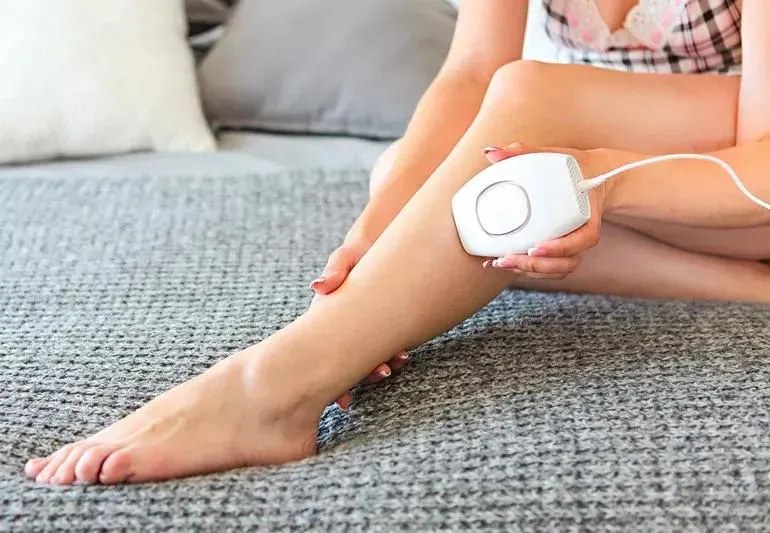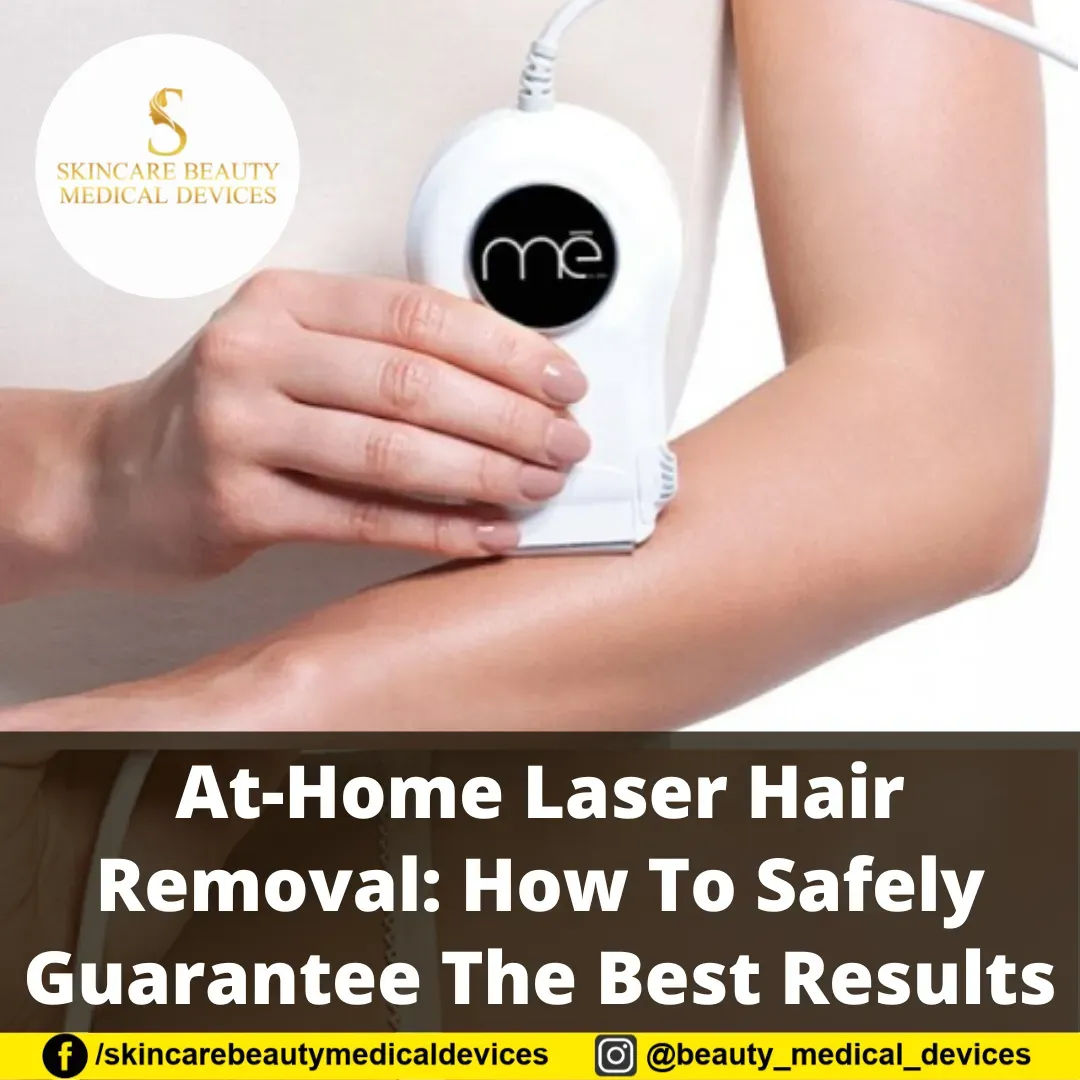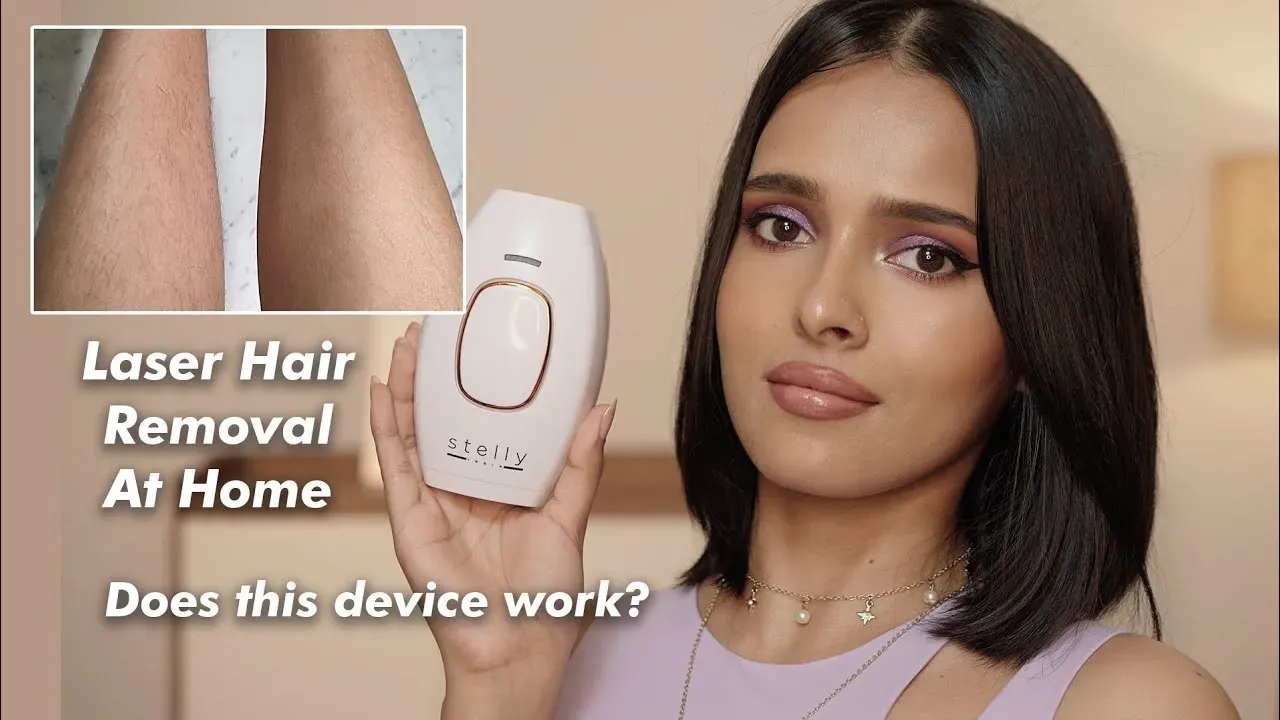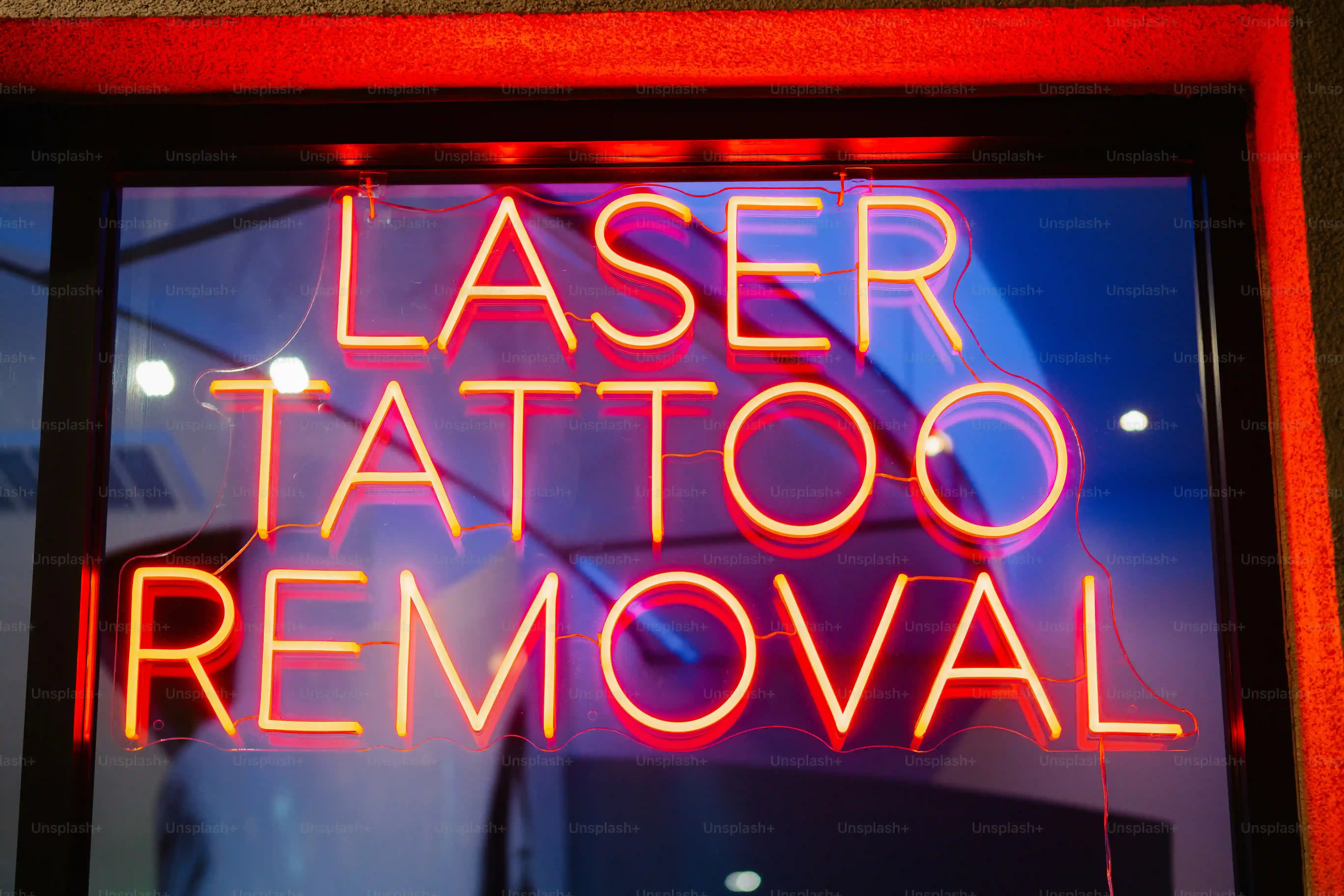Table of Contents
Tired of the endless cycle of shaving, waxing, or plucking? You're not alone. Dealing with unwanted body hair can feel like a never-ending chore, eating up time and money. It's no wonder many people start looking for more permanent solutions. Professional laser hair removal has been around for a while, offering a promise of smoother skin with less hassle. But clinic visits can be expensive and require scheduling around a busy life.
How Does AtHome Laser Hair Removal Work Anyway?

How Does AtHome Laser Hair Removal Work Anyway?
Zapping the Follicle: The Basic Idea
so you see these devices online or in stores and they look like fancy gadgets, right? You might be asking, "How Does AtHome Laser Hair Removal Work Anyway?" The core concept isn't magic, just physics. These devices use concentrated light energy. The idea is simple: this light gets absorbed by the pigment (melanin) in your hair. Think of dark hair like a tiny antenna for light energy.
When the hair absorbs the light, that energy turns into heat. This heat travels down the hair shaft, like a tiny heat wave, and ideally damages the hair follicle itself. The follicle is the little root structure under your skin that actually grows the hair. If you damage that follicle enough, it struggles to produce new hair. It's less about instantly vaporizing the hair you see and more about crippling the factory that makes it.
Laser vs. IPL: Not Quite the Same Beast
Now, you'll often see "laser" and "IPL" thrown around interchangeably when talking about at-home devices. They both use light, but they're not identical. True laser devices use a single, focused wavelength of light, like a precise beam. This makes them very targeted and generally more powerful, which is why professional machines are usually lasers.
Many at-home devices, however, use Intense Pulsed Light (IPL). IPL uses a broad spectrum of light wavelengths, like a flashbulb going off. It's less focused than a laser. This means it can hit multiple targets in the skin, not just the hair pigment. It's generally less powerful than clinical lasers, which is part of why they're deemed safer for home use, but also why they might take more sessions to see results. Understanding this difference is key when you're weighing up if at home laser hair removal is it safe and effective for you.
Here's a quick rundown of the light types:
- Laser: Single wavelength, focused beam, targets melanin precisely. Generally more powerful.
- IPL: Broad spectrum of wavelengths, diffused light, targets melanin and other chromophores. Generally less powerful.
So, Is At Home Laser Hair Removal Safe? Breaking Down the Risks

So, Is At Home Laser Hair Removal Safe? Breaking Down the Risks
Skin Deep Troubles: Burns, Redness, and Irritation
Alright, let's get straight to it. When people ask, "So, Is At Home Laser Hair Removal Safe?", the first things that usually come to mind are skin issues. And yeah, that's a valid concern. These devices are designed to heat up hair follicles, and if you're not careful, that heat can affect your skin too. You might end up with temporary redness, swelling, or mild discomfort, kind of like a sunburn. That's fairly common, especially when you're just starting out or using a setting that's a bit too high for your skin.
More seriously, though less frequent, are burns. This typically happens if you use the device on skin that's too dark for it, or if you overlap pulses, hitting the same spot multiple times. Darker skin has more melanin, the same stuff the light targets in hair. So, the skin absorbs more of the light energy, heating up faster and increasing the risk of a burn. Using the wrong settings for your skin type is a surefire way to invite trouble. I've heard stories, seen pictures online – it's not pretty, and it can leave lasting marks.
Eyes Wide Shut: The Danger of Light Exposure
Beyond skin, there's a major risk that often gets overlooked until someone has a scare: your eyes. These devices emit powerful light pulses. Staring directly into that light, even briefly, can be incredibly harmful. It can damage your retina, potentially leading to vision problems or even permanent loss. This is why every single at-home device comes with protective eyewear. And honestly, you should wear it religiously. Don't skip it, don't peek. It's not a suggestion; it's a necessity if you want to keep seeing clearly.
The danger isn't just from looking directly at the light source. Reflections off mirrors or shiny surfaces can also pose a risk. Treating areas near your eyes, like eyebrows, is generally a big no-no with most devices for this exact reason. The instructions usually spell this out, but sometimes people get a little too brave or think they can manage. Spoiler alert: your eyesight isn't worth the risk of zapping a few stray brow hairs.
Here's a quick list of potential risks:
- Temporary redness and swelling
- Skin irritation or itching
- Mild pain or discomfort
- Blisters or burns (more serious)
- Changes in skin pigmentation (darker or lighter spots)
- Eye damage from light exposure
- Scarring (rare, but possible with severe burns)
The Wrong Match: Skin Tone, Hair Color, and Expectations
Another angle on "So, Is At Home Laser Hair Removal Safe?" involves whether the technology is actually suitable for *you*. These devices work best on light skin with dark hair. Why? Because the light targets melanin. Light skin has less melanin, so it absorbs less light, leaving the majority of the energy to be absorbed by the dark hair follicle. If you have darker skin, there's a higher concentration of melanin in your skin, making it absorb more light and increasing the risk of burns and pigmentation changes.
Similarly, if you have very light blonde, red, gray, or white hair, there's very little melanin for the light to target. The device won't be effective, and you'll just be wasting your time and potentially irritating your skin for no reason. It's crucial to check the device's compatibility chart against your own skin tone and hair color before you even think about buying one. Ignoring this fundamental compatibility issue doesn't just mean wasted money; it significantly ramps up the safety risks.
AtHome vs. Clinic: A Look at Safety and Power Levels

AtHome vs. Clinic: A Look at Safety and Power Levels
The Power Gap: Clinic vs. Couch
Alright, let's talk horsepower. When you step into a clinic for laser hair removal, you're dealing with machines that pack a serious punch. They use medical-grade lasers, often diode or alexandrite lasers, that are significantly more powerful than anything you can buy for home use. This higher power means they can target the hair follicle more effectively and treat larger areas faster.
At-home devices, whether they're true lasers or IPL, are deliberately designed to be less powerful. This is a safety feature. Since you're using it yourself without direct medical supervision, the energy output is limited to reduce the risk of serious burns or skin damage. It's the difference between a controlled demolition charge and a small firecracker. Both use explosives, but the scale is vastly different. This power gap is a key reason why clinic treatments often yield faster, more dramatic, and potentially more permanent results compared to the slower, more gradual changes you might see with a home device.
Safety Protocols: Supervised vs. DIY
Safety isn't just about the device itself; it's also about the environment and the operator. In a professional setting, a trained technician or dermatologist performs the treatment. They assess your skin type and hair color, choose the appropriate settings on a powerful machine, and know how to handle potential reactions or complications. They follow strict safety protocols, including using proper eye protection and ensuring the treatment area is prepped correctly.
At home, you are the technician. You're responsible for reading the manual, understanding the settings, assessing your own skin (which isn't always easy or accurate), and applying the device correctly. There's no expert eye to spot if you're using the wrong setting or if your skin is reacting poorly until after the fact. This self-directed approach inherently introduces more variables and potential for error, even with devices designed with safety in mind. It's like cooking a complex dish from a recipe versus having a professional chef do it; the outcome is more predictable with the expert.
Feature | Professional Clinic | At-Home Device |
|---|---|---|
Power Level | High (Medical Grade) | Lower (Consumer Grade) |
Technology | Primarily Laser (Diode, Alexandrite, Nd:YAG) | Often IPL, some lower-power Lasers |
Operator | Trained Technician/Dermatologist | You (the user) |
Safety Supervision | Direct Medical Supervision | Self-Supervision |
Cost | Higher Upfront & Per Session | Lower Upfront (Device Cost) |
Results | Typically Faster, More Permanent | Slower, Requires More Sessions, May Need Maintenance |
Results and Consistency: The Long Game
Because at-home devices are less powerful, achieving significant hair reduction usually takes more sessions than at a clinic. We're talking potentially months of consistent use, sometimes weekly or bi-weekly, followed by maintenance treatments. Clinic treatments, while requiring multiple sessions too, typically space them out over several weeks and might achieve desired results in fewer overall appointments.
Consistency is also key with at-home use. It's easy to forget a session, get lazy, or not treat areas as thoroughly as a professional might. Life happens, and sticking to a regular schedule can be harder than showing up for a pre-booked appointment. This inconsistency can impact the effectiveness and prolong the process. While at home laser hair removal is it safe when used correctly, achieving truly permanent hair removal might be a longer, more uncertain journey compared to the more predictable path offered by a clinic.
Who's a Good Match for At Home Laser Hair Removal? (And Who Isn't)
Alright, so you're wondering if you're even on the guest list for this at-home party. Who's a Good Match for At Home Laser Hair Removal? (And Who Isn't). The blunt truth is, these devices aren't a one-size-fits-all solution. They rely on that crucial melanin difference we talked about earlier. This means the absolute sweet spot is typically someone with fair to medium skin tones (think Fitzpatrick Types I to III) and dark brown or black hair. The device's light can easily find and target the dark pigment in the hair without the surrounding lighter skin absorbing too much energy. It's like trying to spot a black cat in a snowstorm – easy.
Now, if you have darker skin, say Fitzpatrick Type IV or higher, the risk profile changes significantly. Your skin has more melanin, meaning it will absorb more light, which can lead to burns, blisters, or permanent pigmentation changes (lighter or darker spots). Similarly, if your hair is blonde, red, grey, or white, there's simply not enough melanin in the hair follicle for the light to effectively target. It's like trying to heat up air with a flashlight; you're just not going to get anywhere. So, before you click 'buy', seriously check the manufacturer's guidelines on skin tone and hair color compatibility. Ignoring this is less about getting poor results and more about potentially causing yourself harm.
Making At Home Laser Hair Removal Safe: Practical Tips

Making At Home Laser Hair Removal Safe: Practical Tips
Read the Manual Like It's Your New Favorite Book
so you've decided to give this a go. You've got the device in your hand, maybe you picked it up from hairawaybylaser.com or another retailer. The first, and arguably most critical, step to making at home laser hair removal safe is incredibly simple, yet often skipped: Read the instruction manual. Seriously. Every single word. These manuals aren't just packing peanuts; they contain vital information about how the device works, what settings to use for different skin and hair types, contraindications (things you absolutely shouldn't do), and troubleshooting. Ignoring the manual is like trying to build IKEA furniture without looking at the pictures – you're just asking for trouble, possibly painful trouble in this case.
Part of reading the manual involves understanding the patch test. Before you go zapping away at a large area, you *must* do a small test patch on the area you plan to treat. Most manuals recommend doing this a day or two in advance. This lets you see how your skin reacts to the light pulse and helps you figure out the right intensity setting. A little redness is okay, but if you get blistering, significant pain, or lasting discoloration, that device or setting isn't for you. This isn't being overly cautious; it's basic risk management when asking yourself, "at home laser hair removal is it safe for me?".
Prep Your Skin and Protect Your Eyes
Proper preparation isn't just for gourmet cooking; it's essential for safe at-home hair removal. Before you start, make sure your skin is clean, dry, and free of any lotions, creams, or makeup. Shave the area you plan to treat. The device targets the pigment in the hair follicle below the skin's surface, not the hair sitting on top. Shaving ensures the light energy goes where it's supposed to and doesn't just burn the surface hair, which smells awful and can cause skin irritation. Do not wax or pluck before using the device, as this removes the hair follicle target. Also, avoid treating areas with tattoos, permanent makeup, or moles, as the high concentration of pigment can absorb too much light and cause burns.
Remember that critical point about eyes? Protect them. Always, without exception, wear the protective eyewear that came with your device. Treat areas away from your eyes, especially eyebrows. Even if you think you can be super careful, a stray reflection or accidental flash can happen. Your vision is precious. Beyond that, avoid sun exposure on the treatment area for a specified period before and after using the device, as tanned skin increases the risk of adverse reactions. Check your manual for the exact timeframe.
- Always perform a patch test before treating a new area or using a higher setting.
- Shave the treatment area just before using the device.
- Clean and dry your skin thoroughly.
- NEVER treat areas with tattoos, permanent makeup, or dark moles.
- Always wear the provided protective eyewear during treatment.
- Avoid treating areas near the eyes.
- Stay out of the sun (or use strong SPF) before and after treatments.
- Follow the recommended treatment schedule in the manual.
- Be patient; results take time and consistency.
So, Is It Worth the Zapping? The Final Word on At-Home Devices
Look, the promise of smooth skin without leaving your house is appealing, no doubt. We've seen that at-home laser hair removal *can* be a viable option for certain people, particularly those with light skin and dark hair, when used correctly. These devices are generally less powerful than their professional counterparts, which is why they're deemed safe enough for home use, but it also means results might be slower or less dramatic. Risks like burns or irritation are real possibilities if you ignore the instructions or try to treat areas you shouldn't. It's not a set-it-and-forget-it solution, and it certainly isn't a universal fix for everyone's hair woes. Before you drop a few hundred bucks on a gadget, do your homework, understand the limitations, and maybe even chat with a dermatologist. Skipping the research and just hoping for the best isn't a strategy, it's a gamble with your skin.
